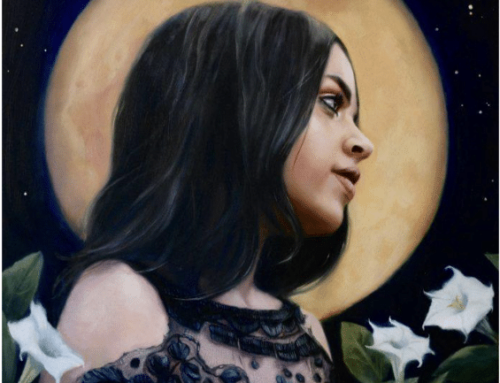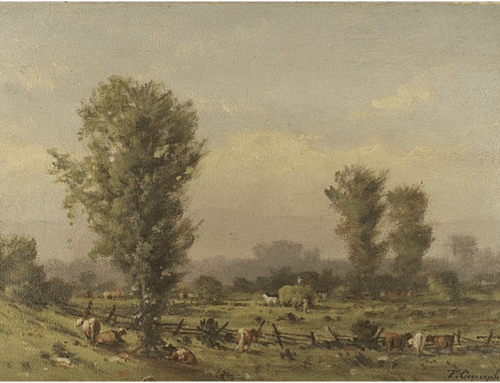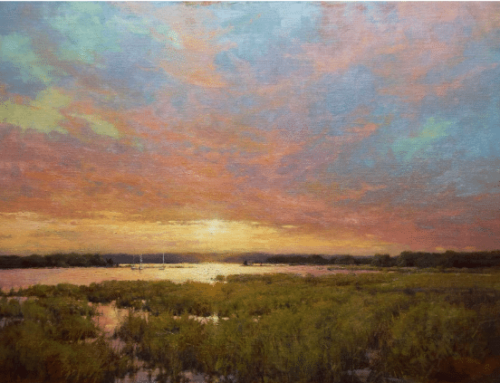Where is it? There should be one, right? There’s a problem with starting an art career: no road map. Want to be an elementary school teacher? Great! Get a degree and certification at school X and start sending resumes. Want to be an artist? Great! Good luck with that.
Because, from what I’ve seen, going to art school is in no way a solid plan. Most art school grads become graphic and game designers, or else they build their careers in ways unrelated to art school, just like everybody else. Going pro can be a bit bewildering, because there really is no one path, no set series of steps to follow.
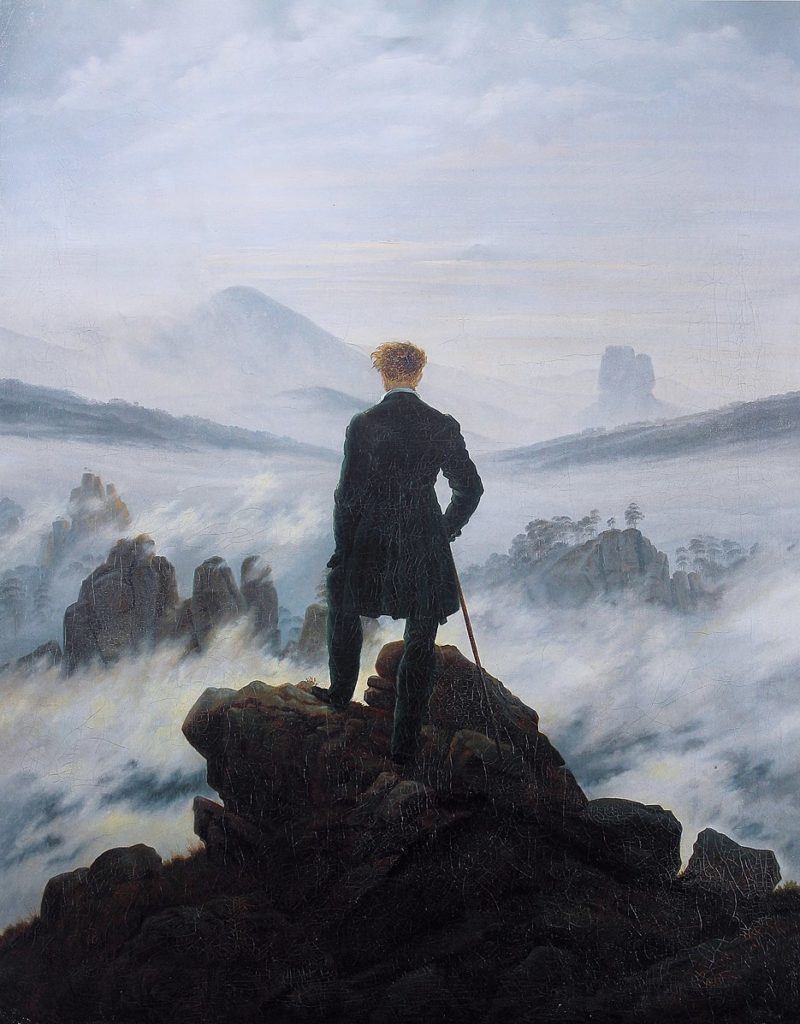
Casper David Friedrich, The Wanderer Above a Sea of Fog
That’s probably not really a bad thing – the lack of road signs means that you are free to find your way in the way that’s best for you and your art. But one thing’s certain, and that’s that just making a plan to do the following will not help: having a good website, emailing galleries, winning competitions, advertising in magazines, posting to social media, networking, buddying up with or becoming a studio assistant to a prestigious artist, or, heaven forbid and may the wolves have mercy on the lamb, wandering into a gallery art in hand.
However, actually doing not just one but multiple of those things at once, is actually an excellent idea. Art careers seem largely a matter of playing darts – rarely do you get insanely lucky (I suppose it does happen, but even so it’s for reasons largely beyond one’s control).
Realistically, this I know: 1. you have to make your best, high-quality work and 2. you have to throw a lot of darts without ever being sure which, if any, will hit the bullseye.
Case in point, the top Google pick, last I looked, The Complete Guide on How to Pursue an Art Career is nothing of the kind. It is, however, not a bad realistic and practical collection of tips and “things you need to know” in general about what it takes to become a successful artist who can make a good living from their art. It’s worth a read.
This resource offers three solid ways to get your art into a gallery. Keep in mind, though, that getting into a gallery, or even several galleries, is not the silver bullet you might imagine. It’s one piece of a larger pie that also includes things like attending openings (not just yours – it’s important to attend others’ too), staying in touch with your best collectors, creating buzz by posting regularly on social media, hosting events such as open studios, sending out occasional email newsletters, giving art talks, and probably teaching at least a few workshops a year.
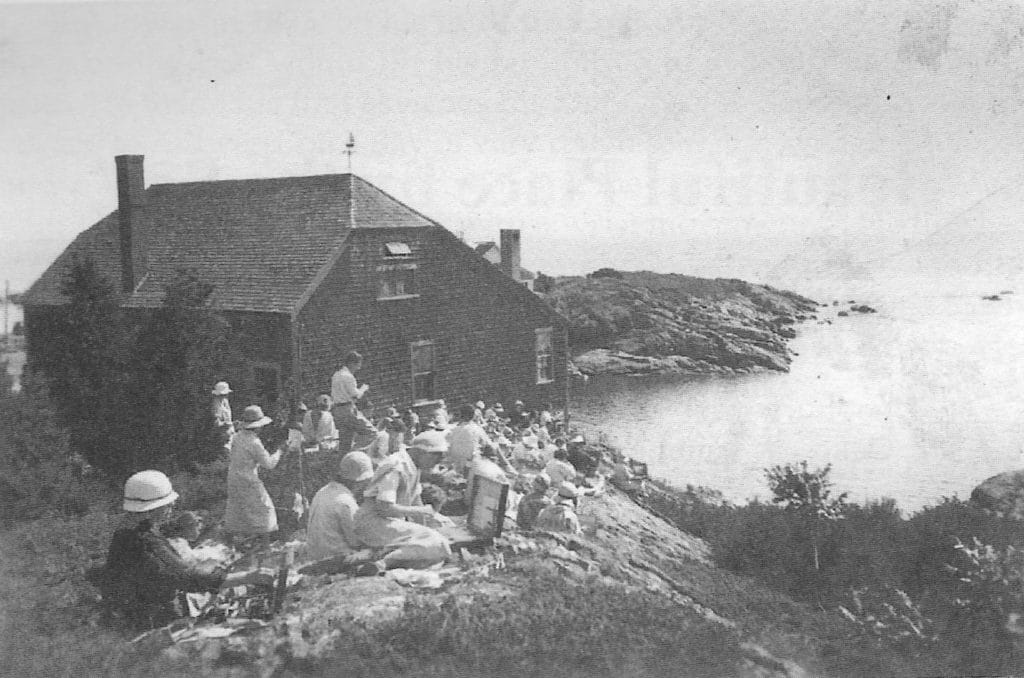
The vast majority of professional artists teach at least something sometime if not regularly, and that’s been true historically since the Renaissance, at least. This is a workshop in Ogunquit, Maine led by Charles Woodbury circa 1920.
In short, building and maintaining an art career these days looks a lot like running a small business. It’s even harder though, because without a Main Street storefront, a successful art career requires more than a “build it and they will come” approach. No one is going to “discover” you unless you put yourself out there. No one will know about your work unless you market it.
And the stinger is, of course, that the less well-known you are as an artist, the bigger role marketing has to play.
So HOW are you supposed to do all things? Where do you start? This piece wisely advises to start by honing how you talk about your art, reaching out to others and doing research, and beginning with the tools you’re most comfortable using. It’s solid advice for making your way and making it yours.
Richard Wilson LIVE
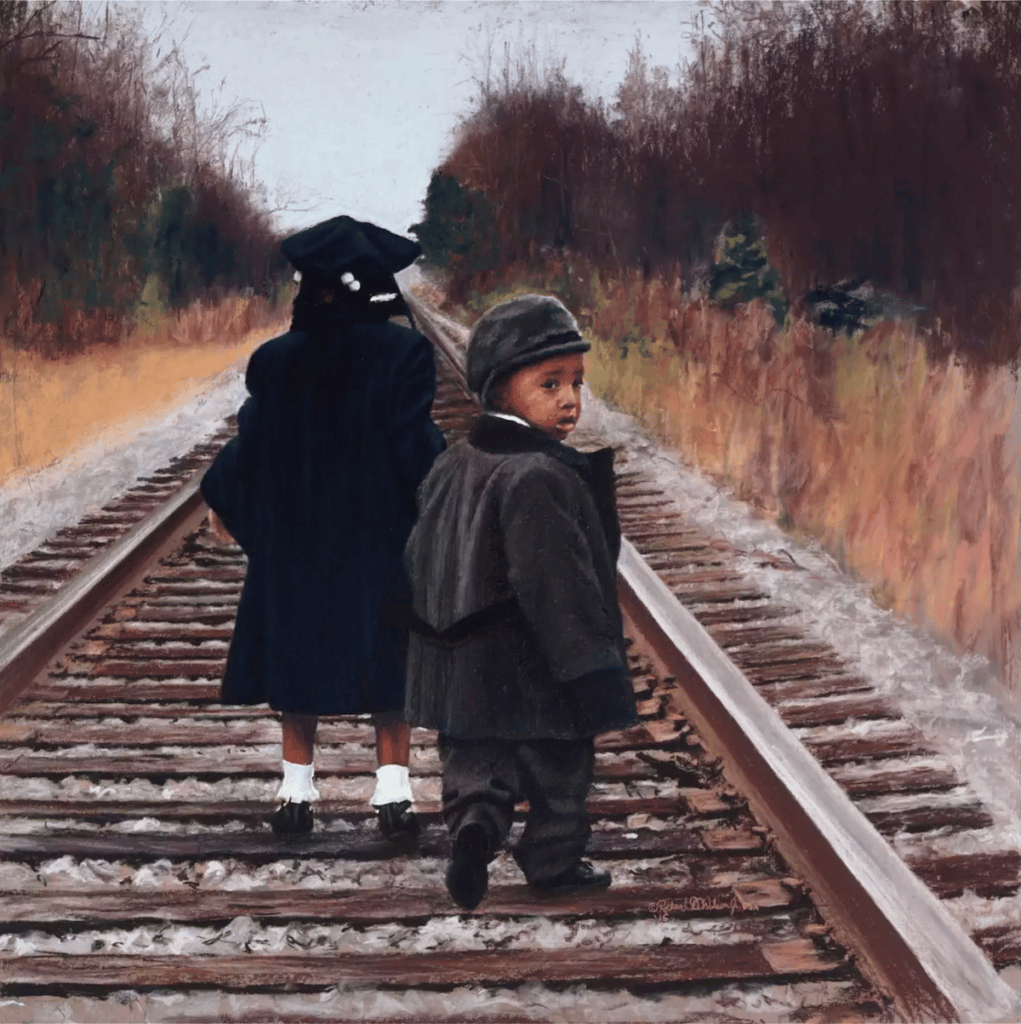
Richard Wilson, Faithful Journey, Pastel, 32 × 32 in
Richard Wilson is an acclaimed pastel artist based in North Carolina. In addition to plein air work, he creates masterful work that probes larger questions about race, individuality, time, memories and dreams.
Wilson will be teaching this week in the online conference Pastel Live.


